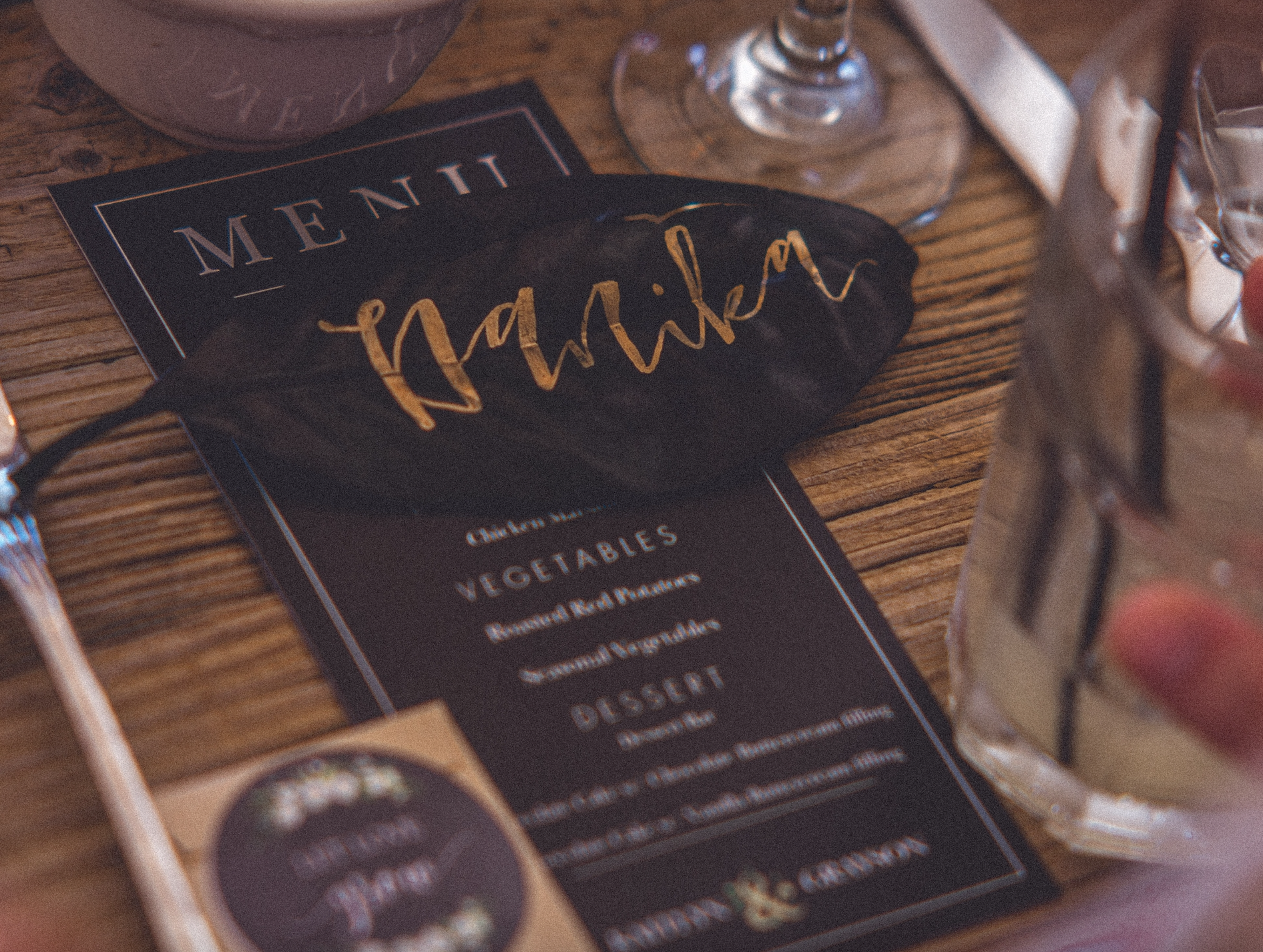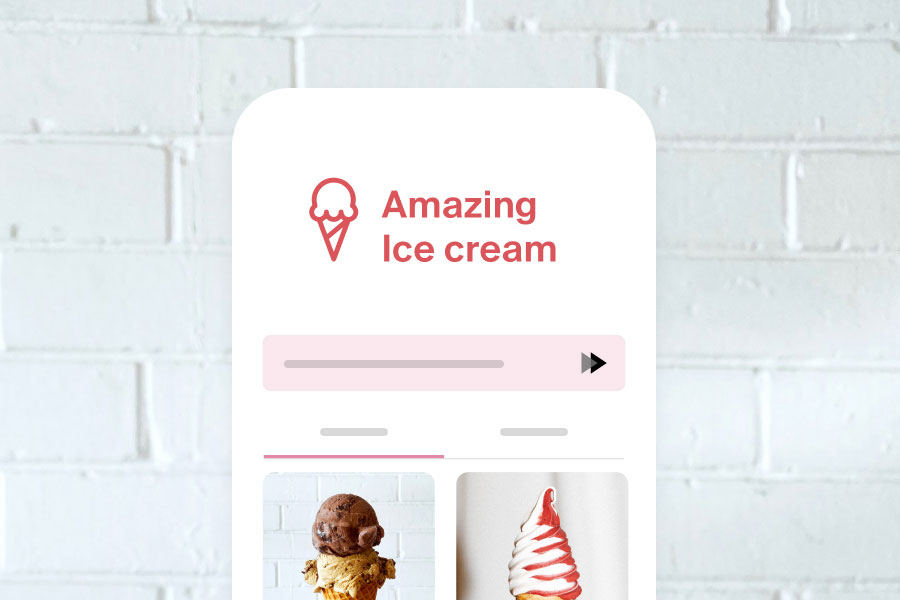Restaurant Menu Design: The Top 11 Mistakes to Avoid
By Sarah Al-Waleed

A restaurant's menu is much more than a list of dishes. It is a tool that can be used to shape a diner's experience, convey the restaurant's concept & personality, and drive massive sales.
Therefore, as a restaurant owner, your menu's design and content should merit considerable thought on your part. On this journey, you'll also need to be aware of the most common menu design mistakes. Because by avoiding these errors, you can create a more appealing menu that will surely tantalize your diners' taste buds and leave a lasting impression.
So with this in mind, let's take a look at 11 of the most common mistakes to watch out for when designing your restaurant's menu.
Menu Design Mistakes
1. Too many items
One of the most common mistakes restaurants make is overcrowding their menus with too many items. Restaurant owners believe that by offering a wide variety of dishes, people will be more likely to find something they like.
However, this can have the opposite effect. The problem with having too many items on your menu is that it can overwhelm your guests and make it difficult for them to decide what to order. It can also make your kitchen seem unorganized and inefficient as if you're trying to do too much at once.
This is not to mention the amounts of wasted food and the sky-high operating costs that you'll undoubtedly encounter in trying to maintain such a high volume of inventory to keep up with those numerous dishes.
The solution? Offer fewer choices and focus on quality over quantity. Choose a few key dishes that make an outstanding example of your cuisine and build your menu around those.
Remember, you can always add and change items as needed. But by starting with a focused selection, you'll make it easier for your guests to choose and speed up service. You'll also find yourself with fewer leftover ingredients and less wasted money.
Here's one example of an overcrowded menu, and mind you, this is just the burger section!
2. Poor categorization and order
Another common menu design mistake is the poor categorization of menu items. This means that the items on your menu are not grouped in a way that makes sense to your guests. Appetizers, soups, main courses, and desserts should all be listed in a correct, easy-to-follow format.
You can even go a little further and create a separate space for each category. For example, featuring vegetarian and non-vegetarian dishes on individual pages can make it easier for guests to find what they're looking for.
The sequence in which these categories are listed is also important. For example, listing main courses before appetizers can discourage customers from ordering starters.
So, a good rule of thumb is to group your items under the applicable heading and list them in a sequence that mirrors how people would typically make an order. In doing so, you can ensure your menu is easy to navigate and encourage your guests to order more items.
Here you can see an example of the illogical ordering of menu items: listing desserts and sides before the main course.
3. Poor choice of menu font and color
Choosing menu fonts and colors that reflect your brand identity can help create a cohesive look for your restaurant and make it more recognizable to customers. Unfortunately, it's another facet of menu design that's often overlooked.
Font
The key to choosing a successful menu font is that it should be consistent with the overall brand image you want to convey.
For example, a fast-food restaurant or a diner may choose to go with a more playful or funky font (e.g., Raleway), which, in that case, would be a suitable choice. In contrast, an upscale establishment using an elegant font (e.g., Lavenda) is more on point.
And while you may be tempted to use a unique font, it's vital to remember that readability should always be your number one priority. After all, if your guests can't decipher what's on your menu, they're not likely to order anything.
Color
The menu colors you choose play a major role in affecting customers' emotions and, consequently, their purchasing decisions.
For example, the color red can stimulate the appetite and trigger impulse buying, making it perfect for fast-food restaurant menus. On the other hand, colors like Sienna are often seen as calming; they help slow diners down so they can take their time and enjoy their meal.
Whichever option you choose, try using colors that align with your restaurant's concept and branding. And be sure to consider how those colors will influence your customers.
4. Typos
Another menu design mistake is failing to proofread your menu for typos and errors. Those can include misspellings or translation mishaps. Having typos on your menus can not only make your establishment look unprofessional but also confuse guests as they're trying to order.
So be sure to proofread your menu thoroughly before printing it out or putting it online. Have someone else look at it as well to catch any errors you may have missed. That way, you'll avoid embarrassing mistakes and ensure that your guests have a positive experience at your restaurant.
Here's a look at how a small typo can affect an entire menu. (I'll take a breakfast sandwich, no beard for me, thanks.)
5. Pricing issues
Overemphasizing prices
Drawing too much attention to your prices can make your customers price-conscious and push them toward making their decisions solely based on the cost of each item.
Restaurants usually do this in several ways. For instance, using a lot of currency signs, bolding or italicizing the prices, using a larger font size, or placing the prices in a prominent position on the menu page.
If you want to avoid this mistake, be sure to de-emphasize the prices on your menu. You can do this by manipulating subtle design elements such as font size and color. Or, you can include the prices next to the dish descriptions rather than having them stand out on their own.
Incorrect pricing
One of the biggest menu design mistakes you can make is randomly increasing the selling price of a dish just because the food cost is high. Markets have a specific price point for individual menu items, and if you try to charge more than this, you will likely find that customers are not willing to pay.
So take the time to research the current market price for individual dishes, and then make sure that your menu reflects those prices. In doing so, you will be able to find the right balance between making a profit and keeping your customers happy.
6. Lack of dish descriptions
Another common mistake that restaurants make is to skimp on the descriptive text. This is the section of the menu where you provide a brief description under each dish's name.
Without descriptions, customers may feel confused and unsure of what they're ordering. Not to mention the bind that your servers will be in, having to spend extra time explaining each dish in detail.
To remedy this, include brief, interesting descriptions of each dish on your menu. And be sure to mention any details that would be of interest to your customers, like if the dish is spicy, vegetarian, or has any allergy-inducing ingredients.
In doing so, you can be confident that your customers will know exactly what they're getting – and that your servers won't be bogged down with requests to provide in-depth descriptions.
7. No food photos
Seeing a photo of a dish can help whet your customers' appetites and make them more likely to order regardless of the price. That's why failing to put photos of your dishes on the menu is another fatal design mistake.
Studies have shown that by including photos in your menu, you stand to increase your orders by up to 30%. And if the quality of those photos is superb, you stand to gain even more.
So take some time to capture high-quality photos of your dishes and add them to your menu. And most importantly, make sure those photos accurately match the dishes you're offering, both in presentation and portion size. Otherwise, you risk disappointing your customers.
8. Poor layout
Your menu layout can significantly impact how customers view your offerings and make choices. You don't want it to be too cluttered or overwhelming, but you also don't want it to look too sparse.
Luckily, there are a few simple tips you can follow to ensure your menu is easy to read and simple to navigate:
- Use a simple layout with clear headers and section dividers.
- Use an easy-to-read font size and style.
- Make sure there's plenty of white space on the page so that your customers' eyes can rest.
You would also do well to understand the psychology of your customers and how they interact with your menu. For instance, studies have shown that people's eyes are typically drawn to the top right part of a menu when reading it.
So why not take advantage of this prime real estate on your menu and list your best-selling items there? Not only will this help increase sales, but it will also assist new customers in making their choice and give your most expensive items more visibility.
9. Overlooking menu durability
Another common mistake restaurateurs make is overlooking the durability of their menus in their design decisions. A well-designed menu should withstand repeated use and still look as good as the day it was printed.
There are a few things you can do to ensure your menu can stand up to wear and tear. First, choose a material that is durable and easy to clean. Laminated menus are a good option, as they are wipeable and won't tear or fade with repeated use.
Second, consider using a protective coating on your menus. A UV-resistant coating will help prevent fading, while a water-resistant coating will protect against spills and stains. Finally, ensure your menus are properly stored when not in use and that they're far away from the heat and humidity of the kitchen.
By following these simple tips, you will create a menu that is built to last. Unlike this poor fellow here:
10. Ignoring upselling opportunities
Upselling is a common practice in the restaurant industry, and for good reason. By offering guests the opportunity to order add-ons or extras with their dish or to opt for a combo meal instead of a single sandwich, you can increase your average ticket size and boost your bottom line.
Restaurants often have their staff go a few rounds with customers, explaining the different add-ons that go with each dish and the variety of combo meals they carry.
Instead, why not list them on your menu and have it do the selling for you? That way, you can take some of the pressure off your servers and make it easier for guests to make their selections.
Start by listing add-ons or extras on your menus, like cheese, mushrooms, or other toppings. You could also look at your best-selling items and come up with different combinations that you could sell as a single order at a higher price and put them on your menu.
11. No change in menu
One of the most important aspects of running a successful restaurant is having a well-crafted menu that can change with the times. While some establishments like to keep their menu items the same for years, the best restaurants are constantly innovating and introducing new items to keep guests coming back.
In addition to adding new items, it's also essential to assess the performance of your current ones. Monitor the current sales of a particular item and see how it's performing. If it's sitting in your kitchen freezer or constantly being returned by guests, then it might be time to take it off the menu.
Alternatively, suppose a particular item is selling exceptionally well and receiving lots of praise. In that case, you should start thinking of new and exciting variations of it.
By constantly analyzing and changing your menu for the better, you'll be ahead of the competition and give your guests the best possible dining experience.
Conclusion
Creating an excellent menu is no easy task, but with a bit of planning and forethought, you can create one that will impress your guests and help fatten your bottom line. Be sure to keep these 11 common mistakes in mind when designing your next menu, and you'll be able to avoid the most common pitfalls that restaurants face.




